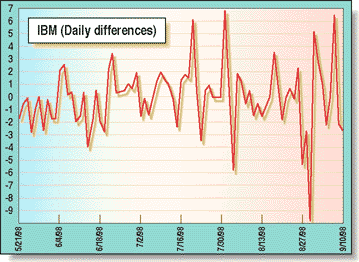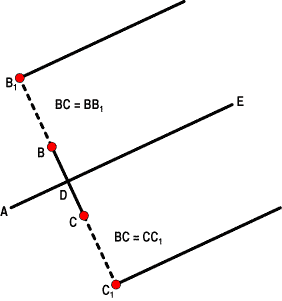

Trade Nifty With www.niftynext.com

STOCK PRICE MOVEMENTThe point-to-point movement model is based partly on the one put forward by analyst J.M. Hurst a number of years ago and partly on my own research. In this model, stock movement is considered to be composed of random point-to-point movement and complex cyclic movement. Point-to-point movement is simply a generalization of the sampling interval and refers to the change between one data point and the next, such as "tick-to-tick," "day-to-day," and "week-to-week," as well as others.FIGURE 1: DAILY DIFFERENCES. The differences between one day's closing price and the next is plotted for IBM stock over a four-month period.

FIGURE 1: PITCHFORK CONSTRUCTION. From low A, draw a line through the midpoint of BC, extending it to E.
This is a Single-One-Man Step Towards making availabe best Trading Principles Colletion from the World of Equqity Trading.We Request to Viewer/Readers of this Blog to Come-forward with their Trading Strategy to Help-others. This Blog is supported by www.niftynext.blogspot.com .All Materials Published here is for Reading Purpose only.